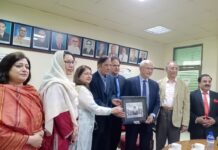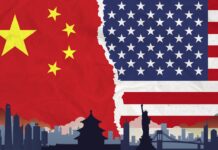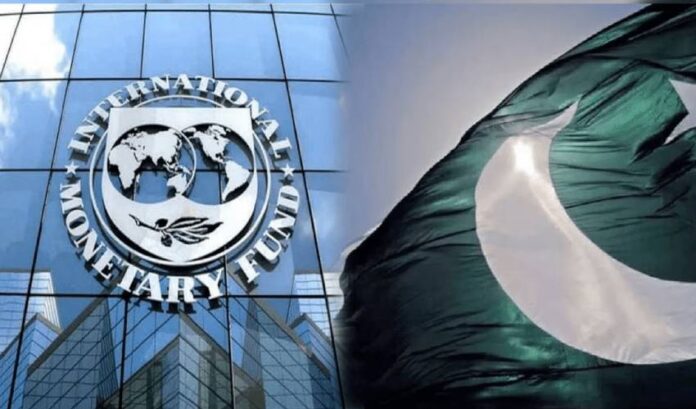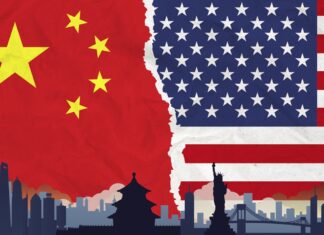By Maqsood Hussain
The Pakistani economy has long been in search of a sustainable path for development, one that ensures inclusive growth and addresses the country’s deep-seated structural problems. Despite its vast potential, Pakistan finds itself trapped in a cycle of economic crises, characterized by a recurring reliance on external borrowing, primarily from the International Monetary Fund (IMF).
Ultimately, the search for a new economic paradigm in Pakistan requires a holistic approach. One that does not merely focus on short-term fixes or external borrowing but prioritizes long-term investments in human development. The lessons of Mahbub ul Haq’s HDI framework remain as relevant today as ever: economic growth must be inclusive, sustainable, and centred on improving the well-being of all citizens, not just a privileged few. Without these reforms, Pakistan will continue to find itself in a perpetual cycle of economic crises, unable to realize its true potential on the world stage
Central to this search for a new paradigm is the vision of Dr Mahboob ul Haq, Pakistan’s former Finance Minister, whose ideas about economic development remain pertinent today. Haq’s emphasis on human development rather than sheer economic growth is especially relevant in a country where inequality continues to undermine social progress.
Dr Mahboob ul Haq’s central critique of Pakistan’s economic system was its capture by a small elite. He famously pointed out that the country’s growth had been “hijacked by a handful of families.” Even today, this reality persists, as wealth remains concentrated in the hands of a few, leaving the majority of the population to struggle with poor living conditions. Haq’s introduction of the Human Development Index (HDI) was a pioneering effort to shift the global focus from GDP to more meaningful measures of development— education, health, political freedom, and security.
In a country like Pakistan, where a significant portion of the population lives on less than $3 a day, Haq’s vision provides a critical framework for addressing the nation’s shortcomings. His belief was that without human development, economic growth would be unsustainable and exclusionary, a lesson Pakistan has yet to fully embrace.
In today’s Pakistan, the current account deficit is a reflection of structural weaknesses within the economy. The economy’s reliance on imports and a consumption-driven model has contributed significantly to this deficit. Short-term policies and emergency measures, often dictated by IMF loan programmes, have failed to address the underlying issues.
Mahboob ul Haq recognized that without long-term investments in human capital—education, healthcare, and social protection—economic stability would remain elusive. Unfortunately, successive governments have lacked both the preparation and imagination necessary to implement the structural reforms needed to move beyond this cycle of dependency.
The country’s current economic situation is one of stagnation, both in terms of exports and investments. The high level of consumption, with 95 percent of goods being imported, is unsustainable. It has led to a vicious cycle where Pakistan, facing a balance of payments crisis, turns to the IMF for short-term relief. But these loans come with stringent conditions that further constrain economic policy and often lead to austerity measures that exacerbate poverty and inequality. Instead of fostering growth, these policies have led to a situation where the economy is unable to break free from its dependence on external financing.
Excessive consumption has also crowded out investment in productive sectors. This has been particularly evident in the manufacturing and export sectors, where growth has been sluggish at best. The lack of significant exports means that Pakistan is unable to generate the foreign exchange needed to service its debt or invest in its future. In a country where tax revenues are low and public services are underfunded, the reliance on imports and external borrowing has created a fragile economic environment. Structural reform is desperately needed to correct these imbalances and put the economy on a more sustainable path.
The media, in turn, has been largely focused on domestic stories, often missing the broader implications of the economic policies being pursued. The absence of a serious public discourse on economic reform has further entrenched the status quo. There is a widespread trust deficit, both within the country and among international investors, which has led to insufficient investment in key sectors. This lack of investment has kept productivity low, stunted technological advancement, and hampered economic diversification. As a result, Pakistan continues to rely on consumption and imports to drive its economy, further exacerbating its structural weaknesses.
One of the most alarming features of the current situation is that all roads seem to lead to the IMF. Despite various governments’ pledges to break free from IMF dependency, the country continues to turn to the institution whenever faced with an economic crisis. The focus on short-term fixes has precluded any meaningful discussion about long-term economic strategy. This reliance on IMF loans is not a sustainable solution. Instead, Pakistan must focus on increasing its exports and attracting investment, particularly in sectors that can provide long-term economic benefits, such as technology, agriculture, and manufacturing.
At the same time, Pakistan’s relationship with China, particularly through the China-Pakistan Economic Corridor (CPEC), offers both opportunities and challenges. The CPEC projects have provided much-needed infrastructure investment, but the expected benefits in terms of increased exports and job creation have not yet materialized.
Export growth remains stagnant, and the promised industrial development along the CPEC route has been slower than anticipated. If properly managed, however, the CPEC initiative could provide the kind of investment and technological transfer needed to kickstart Pakistan’s economy. But this will require more than just infrastructure; it will require a comprehensive strategy to integrate these investments into the broader economy.
To reverse the tide, Pakistan must undergo significant structural reforms. These reforms must address the excessive consumption habits, the concentration of wealth, and the lack of investment in human capital. It must also deal with its reliance on imports and external financing.
As Mahboob ul Haq wisely noted, “The real wealth of a nation is its people.” Until Pakistan prioritizes the development of its human resources—through education, healthcare, and political freedoms—the country’s economic progress will remain stunted. Reforming the tax system, expanding the export base, and fostering a culture of innovation and investment are crucial steps that must be taken if the country is to break free from the cycle of dependency and underdevelopment.
Pakistan’s economic policy has long been driven by a fetish for growth, where the obsession with GDP expansion overshadows the more fundamental elements of sustainable development. This singular focus often ignores the critical need for equitable distribution, human development, and long-term structural reforms.
The growth at any cost mentality reflects a deeper issue— myopic love of control— where market signals are either manipulated or misinterpreted to maintain authority over the economy, rather than allowing for organic, balanced growth driven by genuine market forces.
This lack of vision has been compounded by a lack of experimentation and evaluation. Governments in Pakistan have largely relied on traditional, short-term economic measures, such as borrowing from the IMF or raising taxes, without testing innovative solutions or rigorously evaluating existing policies. There is little room for trial and error, as policymakers remain locked into established paradigms that have shown limited success. As a result, the economy remains stagnant, unable to break free from its cyclical crises.
Adding to these challenges is the country’s self-absorption and global isolation. Pakistan has failed to fully engage with the global economy in a way that fosters sustainable trade relationships and technological advancements. Instead, there is a narrow focus on immediate political gains, often at the cost of transparency.
Lack of transparency with the public exacerbates trust deficits, leaving citizens disconnected from economic realities and undermining democratic accountability. Without clear communication about the country’s economic challenges and plans, public support for necessary reforms remains elusive, further entrenching the status quo.
In this climate, true progress can only come from a shift towards long-term structural reforms, openness to experimentation, and a reorientation toward inclusive, human-centred development.
Ultimately, the search for a new economic paradigm in Pakistan requires a holistic approach. One that does not merely focus on short-term fixes or external borrowing but prioritizes long-term investments in human development. The lessons of Mahboob ul Haq’s HDI framework remain as relevant today as ever: economic growth must be inclusive, sustainable, and centred on improving the well-being of all citizens, not just a privileged few. Without these reforms, Pakistan will continue to find itself in a perpetual cycle of economic crises, unable to realize its true potential on the world stage.






















